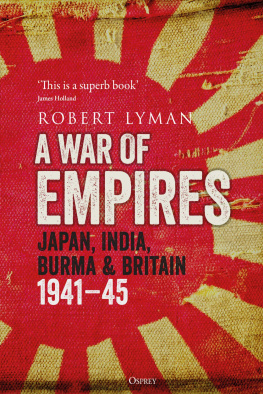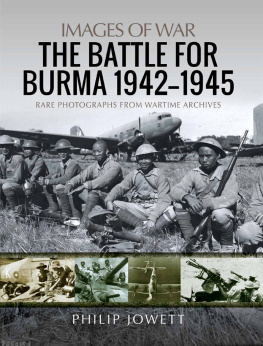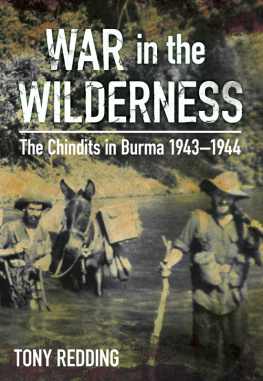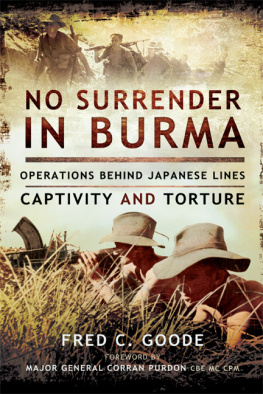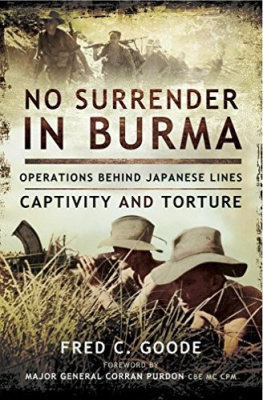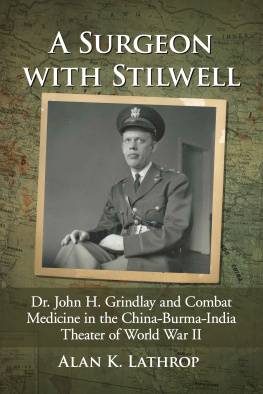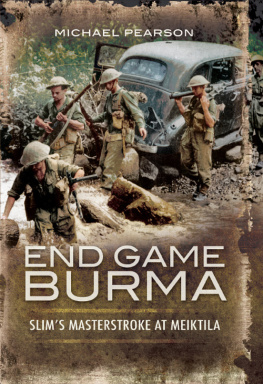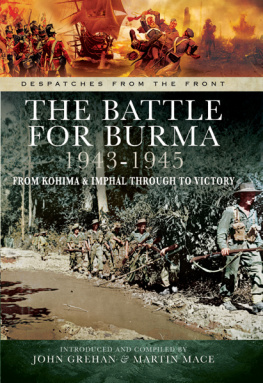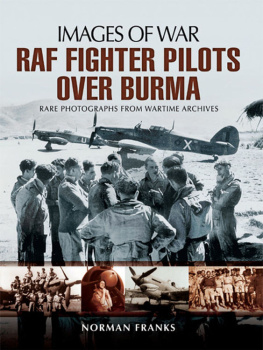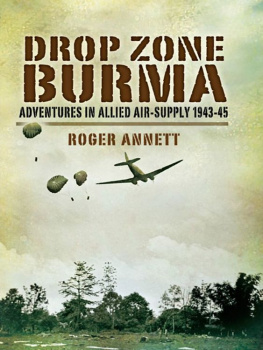
First published in Great Britain in 2014 by
PEN & SWORD MILITARY
An imprint of
Pen & Sword Books Ltd
47 Church Street
Barnsley
South Yorkshire
S70 2AS
Copyright Jon Diamond, 2014
ISBN 978-1-78303-198-2
eISBN 9781473838710
The right of Jon Diamond to be identified as author of this work has been asserted by him in accordance with the Copyright, Designs and Patents Act 1988.
A CIP catalogue record for this book is available from the British Library.
All rights reserved. No part of this book may be reproduced or transmitted in any form or by any means, electronic or mechanical including photocopying, recording or by any information storage and retrieval system, without permission from the Publisher in writing.
Typeset by Concept, Huddersfield, West Yorkshire HD4 5JL.
Printed and bound in England by CPI Group (UK) Ltd, Croydon CR0 4YY.
Pen & Sword Books Ltd incorporates the imprints of Pen & Sword Archaeology, Atlas, Aviation,
Battleground, Discovery, Family History, History, Maritime, Military, Naval, Politics, Railways, Select,
Social History, Transport, True Crime, and Claymore Press, Frontline Books, Leo Cooper,
Praetorian Press, Remember When, Seaforth Publishing and Wharncliffe.
For a complete list of Pen & Sword titles please contact
PEN & SWORD BOOKS LIMITED
47 Church Street, Barnsley, South Yorkshire, S70 2AS, England
E-mail: enquiries@pen-and-sword.co.uk
Website: www.pen-and-sword.co.uk
Contents
About the Author
J on Diamond is an American practicing physician in Pennsylvania. He graduated from Cornell University and was on the faculties of Harvard Medical School and the Pennsylvania State University College of Medicine, achieving the academic rank of Professor at the latter. A lifelong student of military history, Jon has contributed numerous articles to Sovereign Medias WWII History, WWII Quarterly, Military Heritage , and Civil War Quarterly . He was a civilian attendee at the National Security Seminar at the United States Army War College in Carlisle, Pennsylvania. He has authored two Osprey Publishing Command Series monographs on Orde Wingate and Archibald Wavell . A forthcoming Osprey Publishing Combat Series monograph, entitled Chindit versus Japanese Infantryman 194344 will be released in the near future. He is currently working on a book about the New Guinea campaign 1942-1944 for Stackpole Books. As a physician, Jon takes care of many Second World War veterans, who are becoming a dwindling cadre due to the inexorable march of time. We listen to and read about their exploits lest we forget.
Introduction
T he Japanese juggernaut in the Far East and Pacific began the rise to its zenith after the attack on Pearl Harbor on 7 December 1941. Soon other Allied bastions, such as Hong Kong, Singapore, the Philippines and many other possessions, fell to Nippons swift offensives. After the inglorious Allied retreat through Burma in the spring of 1942, with the ensuing capture of that entire country by Imperial Japanese Army (IJA) forces, China was to become wholly isolated from resupply by both sea through Rangoon and overland across the Burma Road, located south of Myitkyina. Only a dangerous air route over the Himalaya Mountains (The Hump) from Indian air depots to Kunming and Yunnan in Chinas south-west kept Chiangs forces combating the Japanese in their several-years-struggle. Without military assistance, China would be compelled to surrender and the IJAs extensive Asian mainland forces could then be diverted to other Pacific war zones, possibly halting the nascent plans of General MacArthur and Admiral Nimitzs dual-pronged assaults there.
Myitkyina, the traditional capital of Northern Burma, is located at the junction of the Mogaung and Irrawaddy valleys and lies at the southern tip of the Himalaya Mountains, which the American Air Transport Commands (ATC) C-46 and C-47 transports had to fly over from India to south-west China. The Himalayas, which serve as the main topographical division between the Indian subcontinent and the Tibetan plateau, are the causal factor behind the wide and severe climatological variations in this part of Asia, which contributed to the dangers of flying over such terrain in rough weather and, at times, in unreliable aircraft. Due to the ubiquitous threat of Japanese Army fighters stationed at the Myitkyina airfield complex, these transport aircraft had to fly far to the north, then swing south to Kunming and Yunnan. The Japanese Army fighters that were mostly stationed in Burma included the Ki-43 single-engined 1941 model Oscar , with two 12.7mm guns and a service ceiling of over 37,000ft as well as the Ki-45 twin-engined, two-seated 1942 model Nick, with three 12.7mm and one 20mm guns along with a service ceiling of over 33,000ft. Using the more northerly route to avoid these fighters, however, the ATC transports dramatically increased their fuel consumption while also reducing the cargo payload delivered by these planes to China. Furthermore, the air route itself was narrow and its saturation with transports was soon approaching to deliver the requisite tonnage to assist Chiangs struggle with the Japanese. In a nutshell, this air-supply nightmare would persist as long as Myitkyina remained in Japanese hands.
In order to keep China in the war as well as expand the width of the air-supply corridor from India to Yunnan province (The Hump), the eventuality of building a new road and pipeline from Ledo in India to ultimately join the old Burma Road south of Myitkyina was apparent to Allied High Command. The Combined Chiefs of Staff (CCS) ordered Lieutenant General Joseph W. Stilwell to train Chiang Kai-sheks Chinese 38th and 22nd divisions in Ramgarh, India and, along with the 5307th Composite Unit (Provisional), also known as GALAHAD or Merrills Marauders, capture Myitkyina. This Chinese-American force fought the IJAs elite 18th Division and took control of the Hukawng and Mogaung valleys through which the Ledo Road coursed to enter the Irrawaddy valley within a few miles of the railway and airfield hub at Myitkyina.
Coincident with Stilwells mission, Brigadier Orde C. Wingates plan ( Operation Longcloth ) was approved by his mentor and General Officer Commanding (GOC), India, Field Marshal Archibald Wavell, to penetrate his 77th Brigade deep behind the Japanese lines in Northern Burma in February 1943 and disrupt their lines of communication (LOC). Although Longcloth s outcomes remain controversial, the ability of properly-trained British soldiers to fight and survive in jungle combat nullified the prevailing dogma of the IJA infantrymans superiority there. With CCS support, Wingate planned an even larger second Burma invasion with six brigades ( Operation Thursday ) for March 1944 utilizing: glider-borne and C-47 transport air-landing of infantry; stronghold defensive areas to foster Japanese LOC interdiction; and the First Allied Air Commandos aerial attack and resupply capabilities to revolutionize remote combat without any direct sea or land-based LOC.
Stilwells overland advance and the Chindits Operation Thursday during 1944 defeated the IJA in Northern Burma and enabled the capture of Myitkyina airfield in a coup de main on 17 May 1944. For a variety of reasons, including Stilwells refusal to use the excellent British 36th Division in his assault, an additional seventy-eight days were needed for Stilwells Chinese-American forces to take Myitkyina town while the debilitated Chindit brigades and surviving Merrills Marauders were evacuated to India after too many months of combat, malnutrition and disease, which decimated their ranks and future capabilities as fighting units.


